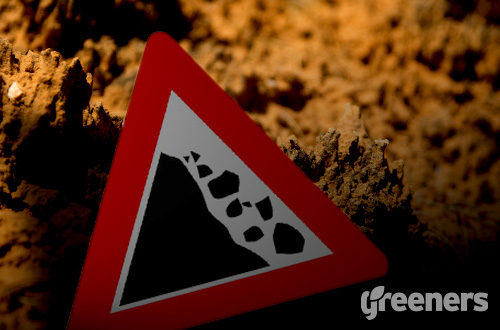Jakarta (Greeners) – Indonesia’s National Disaster Mitigation Agency (BNPB) released year-end report on natural disasters occurred in the country in 2015 and predictions for next year.
Sutopo Purwo Nugroho, head of Information Data and spokesman for BNPB said natural disasters in 2015 have decreased 20 percent compare to last year’s record.
Based on BNPB data, there were 1,582 disasters that claimed 240 lives, 1.18 refugees, 24,365 unit of damaged houses, — 4,977 severe damages, 3,461 moderate damages, and 15,927 mild damages — for 2015. In addition, 484 units of public services were destroyed.
“Throughout 2015, natural disasters were dominated by floods, landslides, and tornadoes. Aside from natural condition, shifted rain patterns, rising population, and lack of public awareness on disasters have contributed to natural disasters. Most casualties were result of landslides,” he said in Jakarta on Friday (18/12).
Furthermore, natural disasters occurred the most in Central Java with 363 disasters followed with 291 disasters in East Java, West Java with 209 disasters, West Sumatra with 93 disasters and Aceh province with 85 disasters.
Meanwhile, Bojonegoro (68 disasters), Cilacap (53 disasters), Sukabumi (42), Sawahlunto (42) and Temanggung (38) were the hardest hit districts.
“The biggest disaster happened in 2015 was forest and land fires. Based on BNPB record, 24 people killed, 600,000 suffered respiratory infection diseases and 2.61 million hectares of landa burned down during the fires. Economic loses reached Rp 221 trillion with biggest loses from South Sumatra, Central Kalimantan and Papua,” he added.
Meanwhile, for 2016, Sutopo said that hydrometeorology disasters, such as floods, landslides, and tornadoes will still be dominating especially between January to February 2016.
Most prone area to be hit by floods, landslides, and tornadoes is Java island. It is predicted that high rainfall will start in January 2016. BNPB predicts 315 districts/cities with a total of 63.7 million people live in flood prone areas.
In addition, 274 districts/cities also threatened with landslides. To anticipate landslides, BNPB requires hundreds of early warning system devices. Currently, only 50 units available.
“To anticipate, BNPB had installed nets made of coconut in walls of landslide prone areas,” he said.
Meanwhile, forest and land fires still potentially happen in Sumatra and Kalimantan but with smaller scale. The biggest fires were in 2015, said Sutopo adding that it was difficult to reduce hotspots in Indonesia.
“La Nina phenomenon will most likely to be stronger in 2016,” he said.
Reports by Danny Kosasih



















































